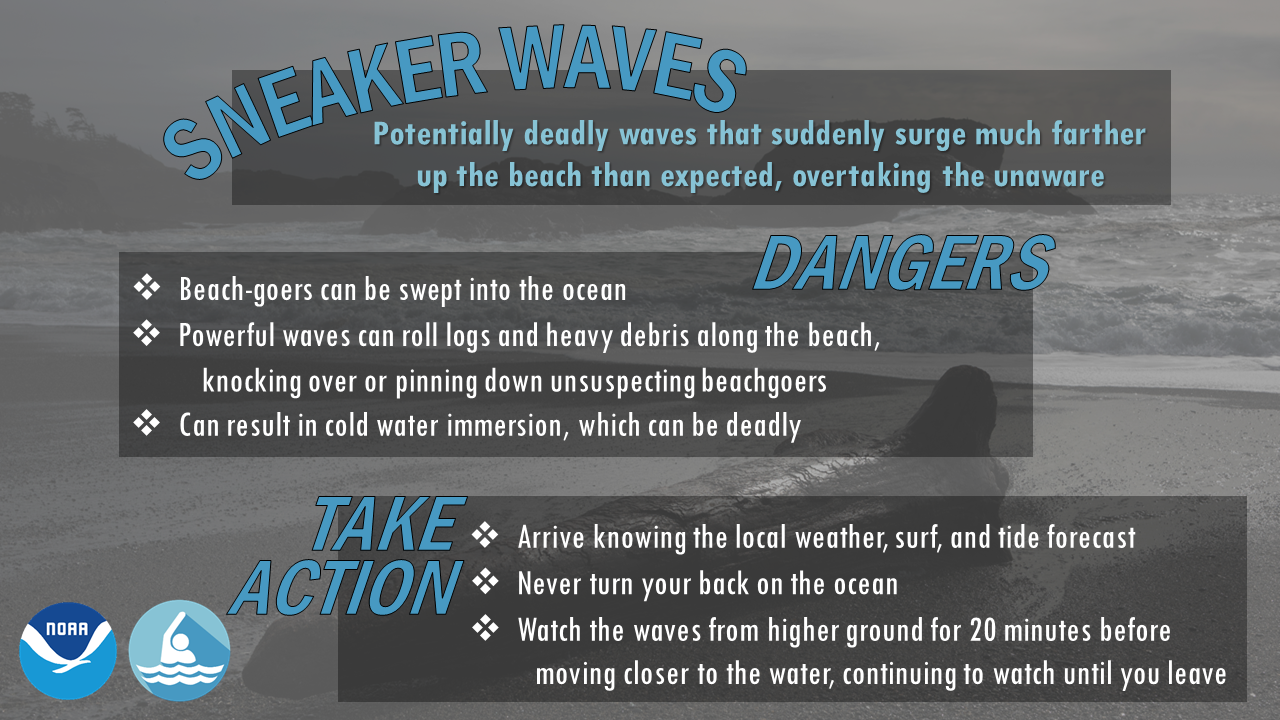

On the remote and rugged coastline of the Northwest, where sneaker waves, beach debris, extreme tides, and freezing water temperature combine, even walking along the beach can be dangerous if you aren't alert.
In areas like this, it is important to understand the dangers that might unexpectedly put you in the water. Cold water temperatures in the Northwest can make any immersion in the water deadly.
Be aware that sneaker waves don’t only occur on the beaches of the Northwest, but can be present on surf beaches around the nation.
What to Know
Sneaker waves are potentially deadly waves that surge further up the beach than expected, overtaking the unaware.
Beach goers can be swept into the ocean.
This can result in cold water immersion.
Cold water immersion can be dangerous, even deadly.
There can be 10 to 20 minutes of small waves right before a sneaker wave strikes.
Logs on the beach are wet, extremely heavy, and can weigh hundreds of pounds. Yet a single sneaker wave can lift and roll these logs further up the beach, as well as roll them back down the beach, knocking over or pinning unsuspecting beachgoers.
What to Do
Arrive knowing the local weather, surf, and tide forecasts. Look to see if there are statements regarding sneaker waves or other beach hazards.
Watch the water for any signs of change in the waves and the weather.
Expect and listen carefully for changes in the incoming waves. Do what experienced surfers and lifeguards do: watch the ocean for at least 20 minutes. Study its wave patterns. Get a feel for the pattern of the waves before relaxing on the beach or engaging in recreational activities.
Stay farther back from the ocean than you think is necessary. Sneaker waves can run up the beach by at least 150 feet (45 meters) into the dry beach.
Never turn your back on the ocean.
Be aware of the following dangers.
The force and speed with which sneaker waves move.
No place on the beach is too high for the wave to reach.
Sneaker waves can happen on any surf coast; however, in the Northwest, water temperatures are frigid and victims caught in sneakers can lose control of their limbs in a matter of seconds.
The volume of sand, water, and gravel they carry and will deposit in an individuals’ clothes. Survivors have described the water-sand mix in their clothes as feeling as heavy as concrete, rendering them incapable of escaping the receding waves pulling them into the ocean.
Stay off and well clear of large logs and debris fields that are anywhere near the surfline or below the high water marks. Sneaker waves can run up on the beach, lifting or rolling these extremely heavy water soaked logs on the beach. People have been injured and even crushed by being caught under these logs from sneaker wave action on the beach.
Exposure to the cold water can cause cold water paralysis in the limbs within minutes, further impairing the individual’s ability to escape the wave. It’s important to always have an escape route when you’re on the beach, especially the steep, enclosed beaches of the Northwest. – Additional information on this subject can be found at https://www.weather.gov/safety/coldwater